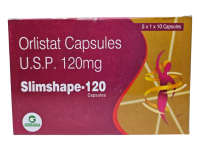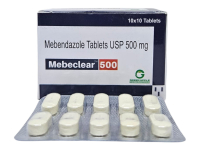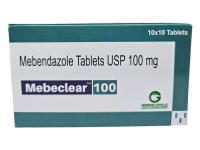Tacromus 0.25mg (Tacrolimus)
Tacromus 0.25mg is available in capsule form; it is calcineurin inhibitor immunosuppressant drug Tacromus 0.25mg is classified as macrolide antibiotic Tacromus 0.25mg is used in combination with other medicines to protect the body from rejecting a transplanted organ like kidney, liver or heart
DESCRIPTION
Tacromus is available in capsule form; it is calcineurin inhibitor immunosuppressant drug Tacromus is classified as macrolide antibiotic Tacromus is used in combination with other medicines to protect the body from rejecting a transplanted organ like kidney, liver or heart
Mostly Tacromus is concomitant with steroids, azathioprine, basiliximab or Mycophenolate mofetil Tacromus is used for preventing organ rejection in organ transplant patients.
INDICATION
Tacromus is used in organ transplantation condition, in some patients who are attain organ transplant, their body white blood cells are trying to reject the transplanted organ. In this condition, Tacromus is helps to accept the transplanted organ by the patient’s body, through weakening the body’s immune system. This leads the body to acquire the new organ which is transplanted
PROPHYLAXIS OF ORGAN REJECTION IN KIDNEY TRANSPLANT:
Tacromus is used in the treatment of organ rejection in patients who are receiving kidney transplant In this condition, Tacromus concomitant with azathioprine or Mycophenolate
PROPHYLAXIS OF ORGAN REJECTION IN LIVER TRANSPLANT:
Tacromus is used in the treatment of organ rejection in patients who are receiving liver transplant Tacromus with adrenal corticosteroids is taken in this condition
PROPHYLAXIS OF ORGAN REJECTION IN HEART TRANSPLANT:
Tacromus is used in the treatment of organ rejection in patients who are receiving heart transplant Tacromus with azathioprine or Mycophenolate and adrenal corticosteroid is used.
ADME PROPERTIES
ABSORPTION
The absorption of Tacromus is incomplete and irregular. The bioavailability of the drug in; Kidney transplant: 17±10%; liver transplant: 22±6; heart transplant: 23±9% Effect of food: Tacromus should be taken with or without food, because with food will decrease the bioavailability of Tacromus 0.5mg
DISTRIBUTION
The human plasma protein binding of Tacromus is approximately 99% Tacromus highly bound to plasma protein like albumin and alpha-1-acid glycoprotein
METABOLISM
Tacromus is largely metabolized by mixed function oxidase system, by cytochrome P-450 enzyme The main metabolites of Tacromus in human liver microsomes is 13-demethyl Tacromus
ELIMINATION
The route of elimination of Tacromus metabolites Feces 92.6% urine 2.3% The terminal half-life of the drug in; Kidney transplant: 19 hours Liver transplant: 12 hours Heart transplant: 24 hours In pediatric liver transplant: 11.5±3.8 hours In pediatric kidney transplant: 10.2±5.0 hours
DOSAGE MANAGEMENT
DOSAGE AND ADMINISTRATION OF TACROMUS 0.5MG
The usual dose of Tacrolimus for organ transplant-rejection therapy
KIDNEY TRANSPLANT
IMMEDIATE RELEASE
While combining with azathioprine, the initial dose of Tacrolimusis 0.1mg/kg taken orally for every 12 hours, initiate within 24 hours of surgery While combining with Mycophenolate mofetil or interleukin 2 receptor antagonist, initial dose is 0.05mg/kg for every 12 weeks
EXTENDED DOSE
Co administration of Tacrolimus with MMF, basiliximab and corticosteroid, starting dose is 0.15mg/kg/day orally as once daily Co administration of Tacrolimus with MMF, corticosteroids without basiliximab: Pre-operative dose: 0.1mg/kg/day within 12 hours before reperfusion Post-operative dose: 0.2mg/kg/day
LIVER TRANSPLANT
The initial dose of Tacrolimus is 0.05 to 0.075mg/kg should be taken as orally for twice daily
HEART TRANSPLANT
The initial dose of Tacrolimus is 0.0375mg/kg orally as twice daily
IN PEDIATRIC
LIVER TRANSPLANT
The initial dose is 0.075 to 0.1mg/kg as twice daily In immediate release, Tacrolimusshould be taken as twice daily, whereas in case of extended release the dose should be taken as once a time Tacrolimus should be taken on an empty stomach. Grape juice must be avoided during Tacromus administration
SIDE EFFECTS
TACROMUS CAUSES SIDE EFFECTS
IN KIDNEY TRANSPLANT
Nervous system: tremor, headache, insomnia, paresthesia, dizziness. Gastrointestinal: diarrhea, nausea, constipation, vomiting, dyspepsia. Cardio vascular: hypertension, chest pain. Urogenital: creatinine increased, urinary tract infection. Metabolic and nutritional: hypophosphatemia, hypomagnesemia, hyperlipemia, hypo/hyperkalemia, diabetes mellitus, hyperglycemia, edema. Blood: anemia, leucopenia. Miscellaneous: infection, peripheral edema, asthenia, abdominal pain, fever, back pain. Pulmonary: dyspnea, cough. Muscle: arthralgia. Skin: rash, Pruritus. Injury: post-procedural pain, incision site complication, graft dysfunction.
IN LIVER TRANSPLANT
Nervous system: tremor, headache, insomnia, paresthesia, dizziness. Metabolic and nutritional: hypophosphatemia, hypomagnesemia, hyperlipemia, hypo/hyperkalemia, diabetes mellitus, hyperglycemia, edema. Blood: anemia, leucopenia, thrombocytopenia. Miscellaneous: infection, peripheral edema, asthenia, abdominal pain, fever, back pain, ascites. Pulmonary: dyspnea, cough, pleural effusion, atelectasis. Gastrointestinal: diarrhea, nausea, constipation, vomiting, dyspepsia, LFT abnormal. Cardio vascular: hypertension, chest pain. Urogenital: creatinine increased, urinary tract infection, kidney abnormal, BUN increased, oliguria Incision site complication, graft dysfunction, post-procedural pain. Musculoskeletal: arthralgia. Skin: rash, Pruritus.
IN HEART TRANSPLANT
CVS: hypertension, pericardial effusion. Whole body: CMV infection. Metabolic disorders: diabetic mellitus, hyperglycemia, hyperlipemia. Hemic and lymphatic system: anemia and leucopenia. Urogenital: kidney function abnormal and urinary tract infection. Respiratory: bronchitis. Nerve system: tremor.
SOME ADVERSE REACTIONS
Lymphoma, serious infections, polyoma virus infections, CMV infections, new onset of diabetes, nephrotoxicity, neurotoxicity, hyperkalemia, hypertension, anaphylactic reactions, myocardial hypertrophy, pure red cell aplasia, gastrointestinal perforation
PRECAUTION
PRECAUTIONS AND WARNING
Elevate the risk of infection and lymphoma, latent virus activation Risk of post-transplant diabetes mellitus Discontinue cyclosporine 24 hours before taking Tacromus
Hypertension occurs Caution with use, in concomitant with nephrotoxicity or calcium channel blockers Myocardial hypertrophy Care should be taken while using CYP3A inhibitors and inducers Monitor blood glucose level Nephrotoxicity and neurotoxicity Risk of viral, fungal, bacterial infection due to immunosuppressant activity of Tacromus QT prolongation
DRUG INTERACTION
Tacromus is metabolized by CYP3A enzymes, by inhibiting these cytochrome enzymes leads to increasing plasma concentration of Tacromus CYP3A inducers: may decrease the concentration of Tacromus Mycophenolic acid products: increase exposure to Mycophenolic acid Grape fruit/grape fruit juice: this will prohibit CYP3A enzymes, leads to increase the Tacromus whole blood trough concentrations Protease inhibitors: increase the concentration of Tacromus
Anti-fungal agents: depending on whole blood concentration of Tacromus , anti-fungal drugs are used. While concomitant voriconazole or posaconazole with Tacromus 0.5mg, the dose of Tacromus decreased to one-third of initial dose Calcium channel blockers: inhibit CYP3A enzymes, increase the concentration of Tacromus Anti-bacterial: erythromycin, clarithromycin, troleandomycin, chloramphenicol are inhibit CYP3A enzyme, leads to elevate concentration of Tacromus
Anti-mycobacterial: are rifampin and rifabutin; induce CYP3A enzymes causes decrease the Tacromus concentration Anti-convulsant: decrease the concentration of Tacromus St. Johns wort: decrease the concentration of Tacromus Gastric acid regulator and suppressor: increase the concentration of Tacromus
CONTRAINDICATION
Hypersensitivity reaction or anaphylactic reactions occurs
PREGNANCY & LACTATION
Pregnancy category: C Tacromus is crosses the placenta, so there is possibilities of risk; Premature delivery risk, neonatal hyperkalemia, renal dysfunction Tacromus should be safely use in pregnancy condition; there is a chance of getting fetus harm, malformations etc Breast feeding is not recommended
STORAGE
Tacromus is stored at room temperature 25°C (77°F); excursions permitted to 15°C to 30°C (59°F to 86°F).
MISSED DOSE
Tacromus , if patient fail to take the dose of Tacromus , must consult with medical practitioner To avoid the illness produced by Tacromus , do not double the dose and the missed dose should be skipped and follow the regular schedule
| Brand name | Tacromus |
| Active substance | Tacrolimus 0.25mg |
| Packaging | 10 Capsules |
| Product form | Capsules |
| Strength | 0.25mg |
There are no comments yet



























